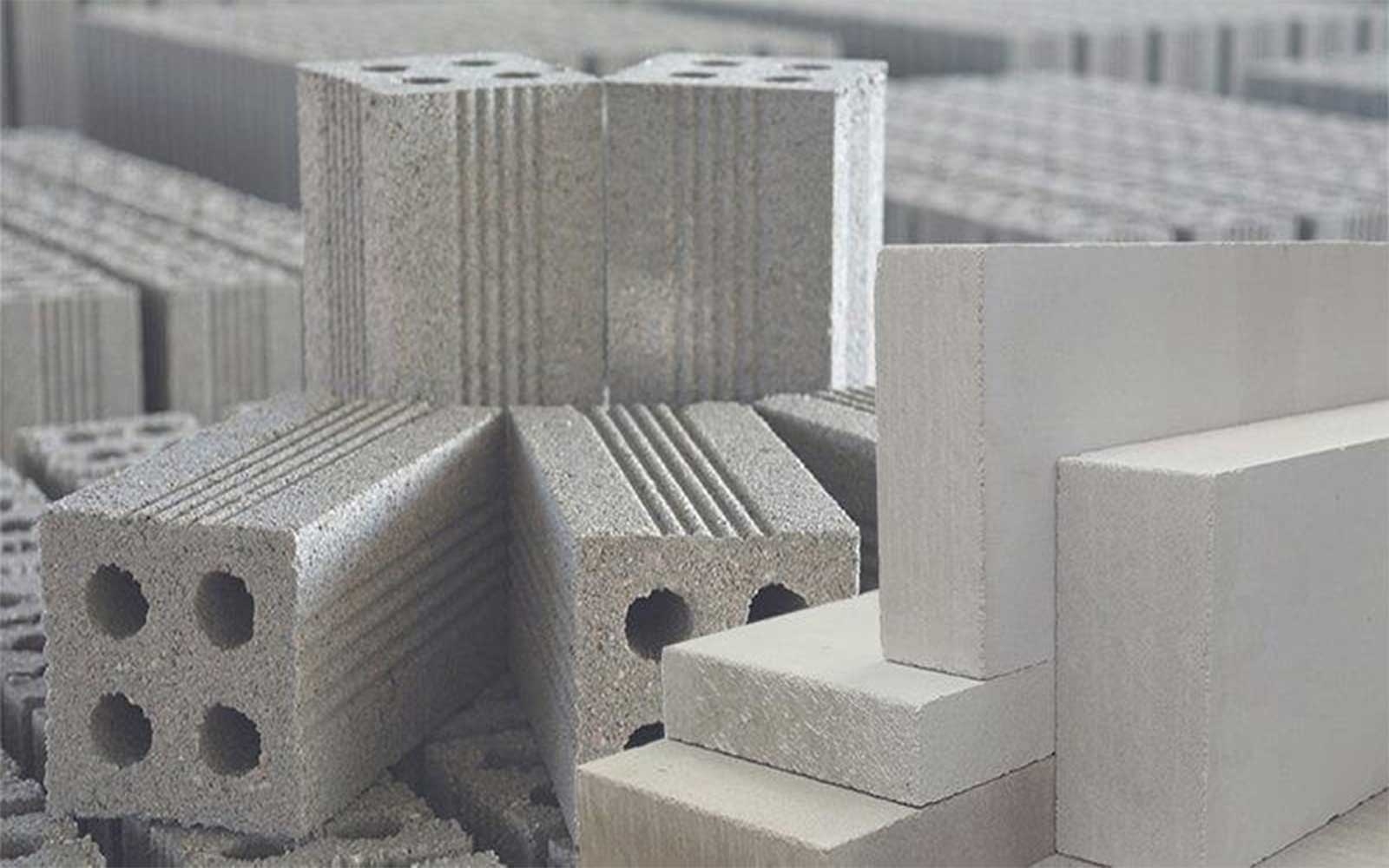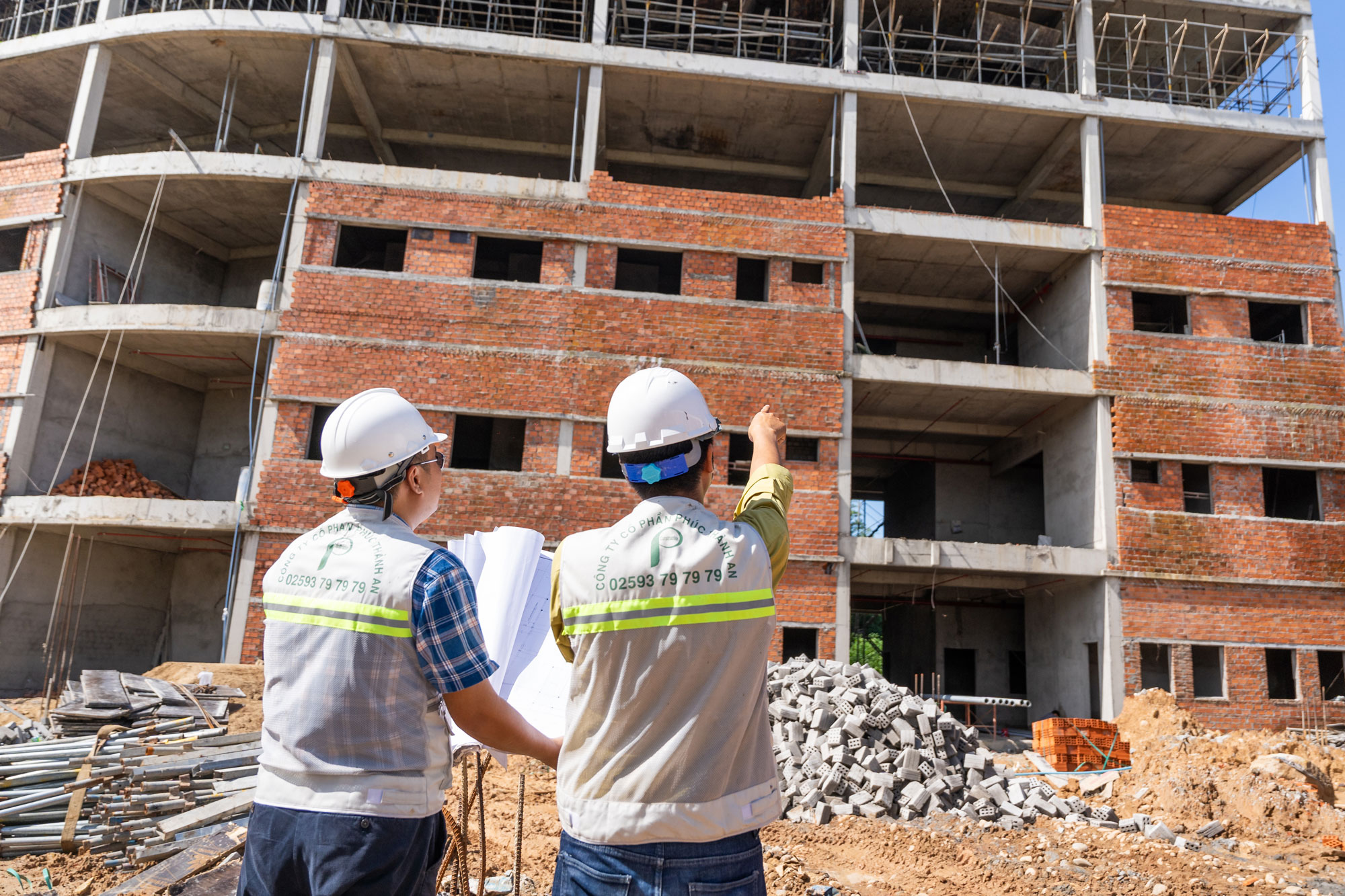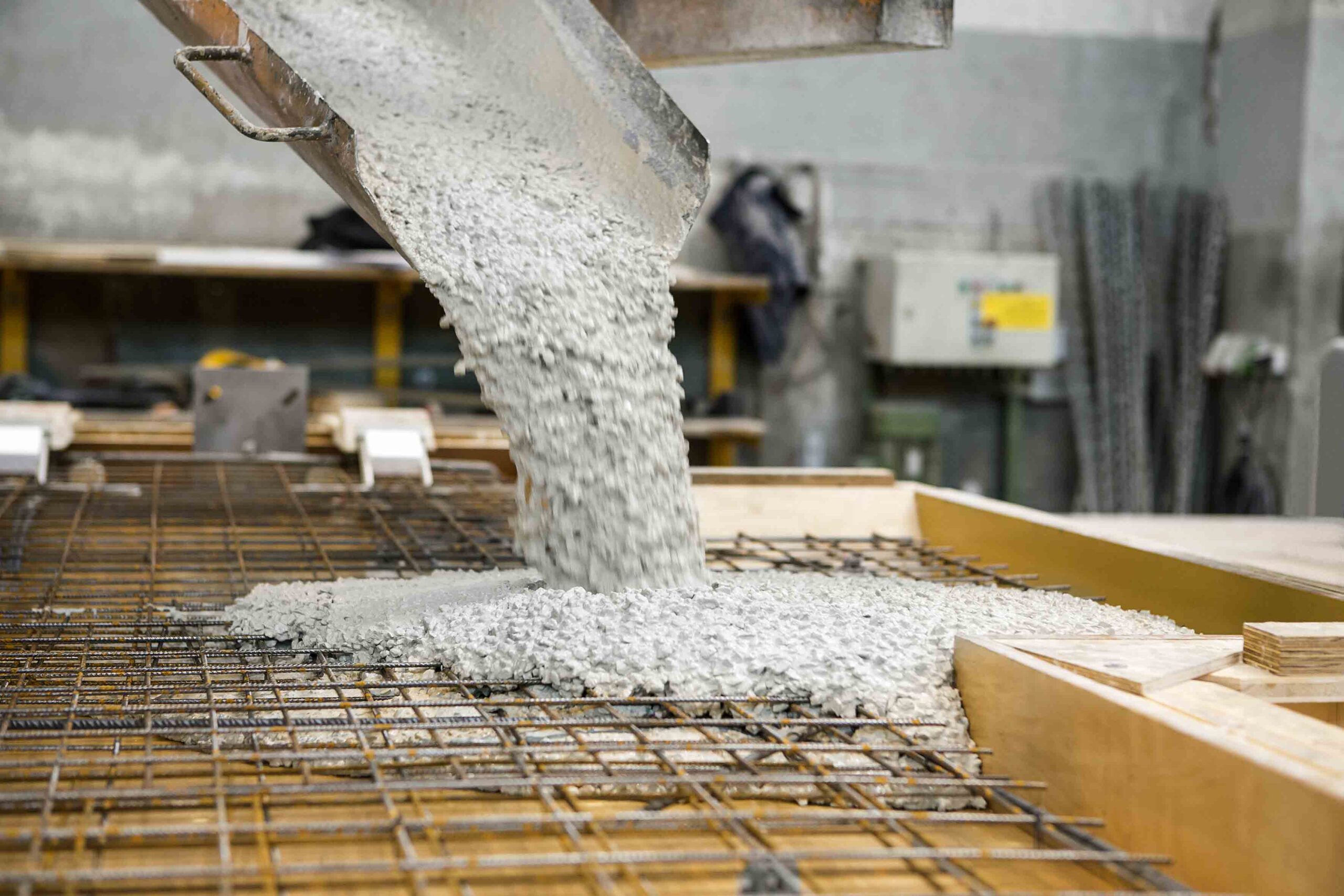Concrete admixtures are essential substances used in concrete production. According to current statistics, the most common types of admixtures include plasticizers, superplasticizers, water-reducing agents, waterproofing agents, expanding and shrinkage-reducing agents, mineral admixtures, and structural repair admixtures.
1. Water-Reducing Admixtures:
These are traditional admixtures used in Vietnam since the 1960s to reduce water content during mixing for the same ease of pouring or to increase pourability with the same water content.
These admixtures improve the deformability of mortar and fresh concrete under the action of compacting forces. Water-reducing admixtures are always organic products with the ability to reduce surface tension or hold the water film together. They lubricate cement particles, causing them to separate. This dispersion creates conditions for wetting and hydration.
Common water-reducing agents include:
Lignosulfonates, by-products of paper production (paper mill effluent) through chemical processing, acting as a liquid or fine powder that is finer than cement and can dissolve readily in water. Lignosulfonates also contribute to other admixtures, such as air-entraining agents, retarders, or water-repellent agents.
Soap resin or abietate of alkali, sodium, or potassium.
Alkylary sulfonates (LAS), synthetic detergents with chain lengths of 12 – 20 carbons. Lignosulfonates are primarily water-reducing agents, and abietate of alkali and alkylary sulfonates (LAS) are primarily air-entraining agents.
Mechanism of action of water-reducing admixtures:
+) Reducing water content by reducing surface tension:
When water-reducing admixtures are added to the concrete mix, the molecules in the admixture dissolve in the solution, adsorbing onto the surface of solid phases (cement particles, sand, stone, and the hydration products of cement), reducing the surface tension between the solid and liquid phases, and reducing the thickness of the water film surrounding the solid phase. In other words, the solid phases slide past each other more easily with a thinner separating water film. This means that for a concrete mix using water-reducing admixtures to have constant workability, less mixing water is needed. If the mixing water remains constant, the increased fluidity due to the use of water-reducing admixtures will require less mixing water.
+) Reducing water content by entraining air:
When the surface tension of water is reduced, the surface-active elements in the admixture often increase the amount of air entrained into the concrete mix during mixing. The amount of air entrained in the concrete mix also acts to increase the slump. Typically, for every 1% increase in entrained air, the corresponding reduction in mixing water is approximately 1%.

2. Delayed Setting Time Admixtures:
Delayed setting time admixtures are additives that, when added to the concrete mix, prolong the setting time of the concrete mix.
The common ingredients in the composition of delayed setting time admixtures available on the market are organic substances, and they include:
- Various types of calcium, sodium, and ammonium lignosulfonates, containing varying amounts of sugar.
- Acids and salts of hydroxy carboxylic acids.
- Carbonate hydrates: glucose, sucrose, starch, cellulose.
Their effect may manifest to different extents depending on the properties of the cement and the dosage used. In general, delayed setting time admixtures significantly reduce the strength at all ages and reduce the heat of hydration correspondingly.
It is noteworthy that when using admixtures in excess, there is a risk of significantly delaying the setting time, and this may not be proportional to the amount of admixture added.
Delayed setting time admixtures are recommended in the following cases:
- Construction in hot weather.
- Long-distance transportation of concrete.
- Ready-mixed concrete.
- Concrete pumping.
- Shotcrete.
- Thin concrete panels to prevent exposure of reinforcement after casting.
- Spray construction.
3. Superplasticizer Admixtures:
Superplasticizer admixtures are a type of admixture that can significantly reduce the water content while greatly improving the workability of fresh concrete. Unlike regular water-reducing admixtures, superplasticizers do not affect the setting time of concrete. Therefore, they can create high-flow concrete. In the early stages of the development of superplasticizers, their effect lasted only about 30 minutes, so the timing of adding the admixture to the concrete had to be closely monitored. Nowadays, there are superplasticizers with a much longer duration, extending up to 180 minutes. The chemical composition of these admixtures typically includes:
- Melamine formaldehyde.
- Naphthalene formaldehyde or others.
Superplasticizer admixtures are commonly used for:
- Increasing the workability of concrete while maintaining a constant water-to-cement ratio.
- Enhancing the strength of concrete by reducing water content. Early-generation superplasticizers could reduce water by 25%, and today there are types that can reduce water by 30% or even 40%.
In the realm of increasing the fluidity of concrete, it can lead to concrete with a slump of 200mm. Such concrete can self-level but might still require compaction. Typical applications of superplasticizers include:
- Improving the pouring and compaction of concrete in regions with densely arranged reinforcement and difficult access.
- Producing high-strength concrete.
- Assisting in pumping concrete over longer distances and heights.
When using superplasticizers, attention should be paid to the following:
- Choose the appropriate type for a specific type of cement according to the manufacturer’s instructions and with the specific conditions of use.
- Although concrete with superplasticizers can self-level, good formwork must be ensured to prevent leakage due to high fluidity.
- When using superplasticizers that extend the setting time by 2 to 3 hours compared to not using the admixture, additional admixture at the batching plant is allowed.
4. Air-Entraining Admixtures:
Air-entraining admixtures create numerous small air bubbles in concrete to enhance its freeze-thaw and thaw-freeze resistance, especially in low-temperature conditions. The effectiveness of this type of admixture diminishes with increasing concrete temperature and high cement content, or when incorporating fly ash.
Common raw materials used to produce air-entraining admixtures include: Lignosulfonates and sodium abietate, salts of ethanoamine, fatty alcohol sulfonate, alkylaryl sulfonates, alkaline soaps of fatty acids, etc.
Roles and functions of air-entraining admixtures:
In fresh concrete, air bubbles serve two roles: initially as a liquid replacing some water, and subsequently as an inert material replacing some fine aggregate (less than 1 or 2 mm).
After the concrete has hardened, the air bubbles alter the structure of the material and cut conduits within the concrete. Upon freezing, the air-entrained admixture acts as expansion chambers for water pushed by ice.
Air-entraining admixtures allow reducing stratification and water segregation of concrete.
These admixtures consistently improve the surface finish of concrete during formwork removal. However, most of them can reduce mechanical strength. Air in concrete always significantly improves the frost resistance of fully hardened concrete, increasing its durability.
Air-entraining admixtures are used to manufacture both reinforced and non-reinforced concrete, with some special types to limit stratification.

5. Rapid Hardening Admixtures:
Rapid hardening admixtures are additives that, when added to the concrete mix, accelerate the setting time of the concrete mix.
These admixtures are used to facilitate concrete pouring in cold weather, allowing for the completion of concrete pouring and early removal of formwork. They can also be used in conditions to seal leaks due to water pressure, finishing structural repairs earlier.
The function of this type of admixture is to accelerate the setting process, increase the early strength of concrete, but it may reduce the long-term strength of concrete.
It is essential to note that an excessive dosage can lead to a reduction in concrete compressive strength. Rapid hardening admixtures often contain chloride ions, so they tend to increase corrosion for reinforced concrete structures. Therefore, it is recommended not to use admixtures containing chloride ions in current production.
Raw materials for manufacturing rapid hardening admixtures include:
- Chlorides: calcium, sodium, aluminum.
- Alkali substances: sodium, potassium, ammonia, as well as their salts: calcium carbonate, aluminum carbonate, sodium borate, potassium borate, nitrate, nitrite, calcium formate.
6. Water-Repellent Admixtures:
Water-repellent admixtures are additives that improve the waterproofing properties under pressure of concrete and moisture resistance by preventing the absorption of water into concrete.
Water-repellent agents include a mixture of various materials such as:
- Fine powder materials (silica fume, bentonite, fatty lime, emulsion of plasticizer).
- Fatty acid salts (stearate – oleate).
- Plasticizing agents (polymers, lignosulfonate).
- Other products (aluminum sulfate, seaweed-based foaming agent).
Water-repellent agents primarily act physically by plugging pores and smaller conduits into very fine particles they contain or into precipitated or foaming products. However, water-repellent agents can only plug small pores, and they cannot seal a bad type of concrete, poorly coordinated, with large voids or inhomogeneities.
Main applications of water-repellent admixtures include:
- Production of concrete for hydraulic structures: reservoirs, water tanks, channels, swimming pools, retaining walls, water locks, silos.
- Production of waterproof mortar: coatings (balconies, basements, garages, bridges, industrial floors, etc.).
- Production of plaster for external use, joints of masonry, coating of sewer pipes, and pipe joints.
7. Waterproofing Admixtures:
Waterproofing admixtures are used to reduce the transmission of liquid or water vapor from or through concrete. These admixtures usually originate from small particle materials with pozzolanic properties, meaning they can react with calcium hydroxide released from cement hydration to create a cementitious component filling the voids.
Waterproofing admixtures can be in the form of powder, slurry, or liquid and may contain pore-blocking or water-repellent materials. The main materials in the pore-blocking category are sodium silicate, aluminum sulfate or zinc sulfate, aluminum chloride, and zinc chloride. These are very chemically flexible pore-blocking materials. Furthermore, they accelerate the rate of cement hydration, thereby providing good waterproofing properties to concrete at an early stage. Inflexible pore-blocking materials such as shale or pumice are usually finely ground. Their main function is to improve workability and reduce the amount of water when designing for ease of application. It makes the concrete dense and fundamentally waterproof. Some other types of admixtures may contain premium butyl stearate rather than soap, but they do not have a foaming effect. Premium butyl stearate acts as a water repellent in concrete.
Mineral oils without fats or vegetable oils have also been proven to be very effective in producing waterproof concrete.
The production of low or high permeability concrete depends largely on whether concrete pouring is successful or not. Something that increases the plasticity of the given mix without causing harmful effects or limiting water leakage and thus reduces the number of voids in concrete is considered a water-reducing admixture. Air-entraining agents are also considered to belong to this category because they increase the workability, plasticity of concrete, contribute to reducing water content, and water leakage in concrete.
Waterproofing admixtures are used for:
- All applications that require waterproofing for concrete, such as perimeter walls and floors, reservoirs, water tanks, underground structures, silos, and reservoirs.
- Concrete blocks and bricks.
- Panels and poor cement mortar.
- Perimeter walls and floors of reservoirs – Concrete structures requiring surface coatings, tiles, or primers.
8. Pumping Aid Admixtures:
Pumping aid admixtures are used to make concrete smoother, easy to pump over long distances to avoid concrete stratification. The function of this type of admixture is to trap water inside the cement matrix, making the cement matrix more flexible and sliding into the voids of the aggregate, making the concrete smoother.
This type of admixture is only used for concrete designed with pump distribution, not for concrete designed with normal distribution.
9. Expansive Admixtures:
Expansive admixtures increase the volume of mortar or concrete to produce pumpable mortar for anchor bolts, column base inserts, or to create self-stressing concrete.
This type of admixture works during cement hydration or expands by itself or reacts with other components of the concrete to create expansion. The materials of this type of admixture can be classified into three types. The type containing iron and oxide-increasing substances, the gas-forming admixture containing aluminum powder, and the type containing free calcium oxide.




